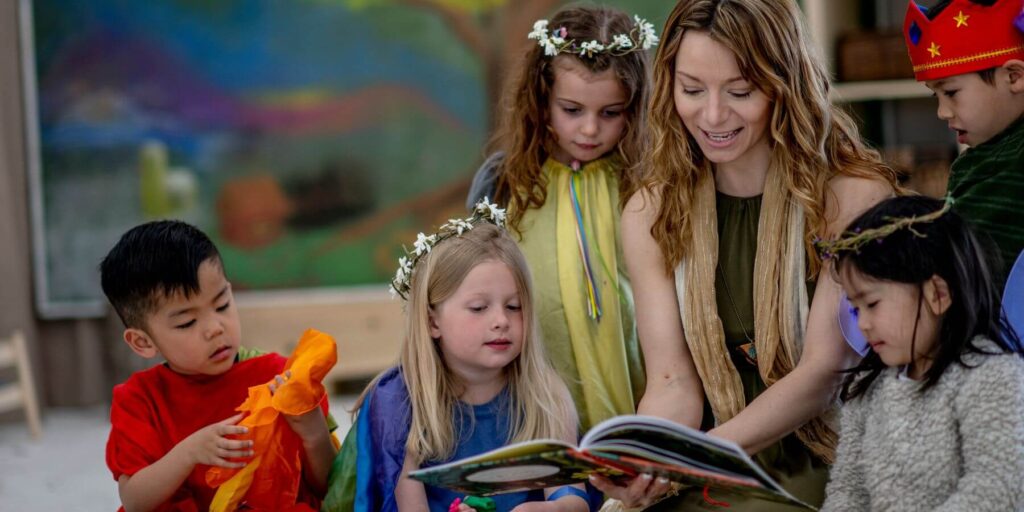
Welcome to The Magic Art of Homeschool! If you’re homeschooling a visual/spatial learner, get ready for a fun and creative journey. These kids thrive when they can see and imagine things clearly—they often excel in areas like art, design, and geometry. I’ve found that setting up the right environment can make all the difference. As a homeschooling parent, your job is to create a space that nurtures your child’s strengths, making learning both enjoyable and effective.
In this post, I’ll share tips and strategies that have worked wonders for visual/spatial learners. Whether it’s designing their workspace, finding the right tools, or planning activities that keep their creativity flowing, this guide will help you tap into your child’s potential.
Understanding Visual/Spatial Learners
Before we dive into setting up the space, let’s talk a bit more about what makes visual/spatial learners tick. These kiddos are fantastic at visualizing objects and remembering pictures, and they often show talent for things like drawing, building models, and solving puzzles (you may have noticed they’re the ones acing those tricky mazes!).
But traditional learning environments can sometimes feel like a roadblock. If the teaching style is focused on lectures or verbal instructions, visual learners might struggle to stay engaged. They need to see what’s being taught to fully grasp it. I remember a time when my own child was completely lost trying to follow a list of oral instructions, but as soon as I sketched out a quick diagram, everything clicked! Recognizing these traits in your child can be a game-changer.
Designing the Perfect Learning Space
Now, let’s talk about creating a space that really speaks to your visual/spatial learner. Here are some ideas that can transform your homeschool room into a place where creativity thrives.
Prioritize Visual Stimulation
Visual learners love a stimulating environment, so let’s make sure the space is filled with things that capture their attention:
- Use Colors and Vivid Imagery: Go ahead and splash some color on those walls! Think big posters, charts, and infographics tied to what you’re studying. When we were learning geography, we hung up a giant world map, and I kid you not—it became the centerpiece of almost every conversation. Whether we were talking about explorers, weather patterns, or even family trips, that map came in handy. Visuals help connect abstract ideas to real-life applications, which is so helpful for these learners.
- Create Subject Corners: A fun tip I picked up is having designated corners for different subjects. One side of the room could be for math, with shapes and numbers displayed, and another could be the “science zone,” filled with models of atoms and planets. Moving between these areas can help your child shift their mindset from one subject to the next. It’s a great way to make learning feel more dynamic.
Incorporate 3D Learning Tools
Visual learners thrive with hands-on, 3D materials, so try bringing the lessons to life with these ideas:
- Models and Physical Objects: Think globes, geometric shapes, or anatomical models. For my visual/spatial learner, nothing beat holding an actual globe when we talked about geography. They could trace their finger along the equator, see how the continents connected, and suddenly, the whole concept made sense. Having these concrete objects makes abstract ideas feel real.
- DIY Crafts and Projects: Encourage creativity through hands-on projects like building models, dioramas, or even painting. One of the highlights for us was building a solar system model out of foam balls and paint—it was messy, sure, but by the end of it, my child knew the planets like the back of their hand. These projects are fun, but they’re also powerful learning tools.
Optimize for Natural Lighting
Natural light is a big deal for visual learners—it affects everything from focus to mood. Here’s how to make the most of it:
- Arrange Near Windows: If possible, set up your workspace by a window. There’s just something about natural light that keeps the energy up and makes the space feel welcoming. We found that on days when the sun was shining, concentration and creativity were way higher.
- Use Full-Spectrum Lamps: Not every room is lucky enough to get lots of natural light, so if that’s the case, invest in full-spectrum lamps. These mimic natural sunlight and help create a bright, positive learning environment. Trust me, it makes a big difference!
Essential Learning Tools and Resources
When it comes to resources, visual learners benefit from interactive, visually rich tools. Here are some essentials we’ve found helpful:
Digital Tools and Apps
- Educational Software: Tools like GeoGebra (for math) or Tinkercad (for 3D design) are perfect for visual/spatial learners. One time, I introduced my child to GeoGebra, and suddenly, geometry went from confusing to wow, this is cool! Watching them interact with shapes and designs on-screen was like a lightbulb moment for both of us.
- E-books with Visual Enhancements: E-books that include videos, diagrams, and charts are also fantastic. Not only do they make reading more engaging, but they also break down complex ideas into digestible visuals.
Visual Aids and Supplies
Keep your homeschool stocked with tools that allow for creative expression:
- Whiteboards and Markers: You’ll want a whiteboard or two—it’s a lifesaver for visual learners. They can draw, map out their ideas, and visualize concepts as they work through them. In our house, we use whiteboards to brainstorm and outline essays or to draw out math problems.
- Graphic Organizers and Mind Maps: Visual learners love organizing information visually. Use graphic organizers or mind maps to help your child track their thoughts. One time, while learning about ecosystems, we made a giant mind map connecting different habitats and species—it was a hit, and my child still remembers the relationships between different ecosystems!
Introducing Concept Visualization Techniques
Visual Storytelling
Turn lessons into visual narratives to help your child remember information in a fun and creative way:
- Create Visual Narratives: Have your child draw comic strips, storyboards, or timelines to explain lessons. For example, after reading about the American Revolution, my child sketched out the key events like a comic strip, complete with dialogue bubbles! It not only helped them understand the sequence but made it more memorable.
Mind Mapping
Mind mapping is a great way to break down information into digestible chunks:
- How to Create Mind Maps: Start with a central idea and branch out from there. When we were learning about space, we placed “The Solar System” in the center, then connected planets, moons, and asteroids to it using different colors and images. It turned a dense topic into something easy to understand and fun to look at.
Fostering Creativity and Exploration
Encouraging Art in Education
Visual learners often express themselves through art, so use this to your advantage:
- Integrate Art Projects: Incorporate art into subjects like science or math. When we studied atoms in chemistry, we had an art day where we drew atomic models and painted them with watercolors. It was an amazing way to bring dry material to life and helped make tricky concepts stick.
- Free Drawing Time: Let your child’s creativity shine with unstructured drawing or painting sessions. These moments can be a great way for them to relax, unwind, and process their learning in a different way.
Field Trips and Real-World Learning
Take learning out of the home whenever possible:
- Visits to Museums and Galleries: Plan field trips to museums, art galleries, or even architecture tours. My visual learner lit up during a visit to a natural history museum—seeing those dinosaur skeletons in person made everything we’d read about feel real.
- Virtual Tours: If you can’t get out and about, virtual tours of museums or landmarks can be just as engaging. We once explored an online tour of the Louvre and spent hours discussing the artwork we “saw.”
Encouraging Self-Discovery
Let your child lead their learning in ways that inspire curiosity:
- Self-Led Learning Projects: Allow your child to pick a project that excites them, whether it’s designing a model of an eco-friendly house or painting a mural. Watching my child take on their own project sparked a passion that wouldn’t have been possible through structured lessons alone.
Conclusion
Creating a homeschool haven for your visual/spatial learner is an amazing opportunity to engage their imagination and creativity. By tailoring your space to fit their learning style—whether through vibrant visuals, hands-on tools, or interactive digital resources—you can help them thrive.
Remember, every child is unique, and finding what works best for yours is all part of the adventure. Have fun, experiment, and enjoy the magical world of homeschooling your visual/spatial learner!
What’s been working in your homeschool? Share your experiences in the comments—I’d love to hear your tips!


